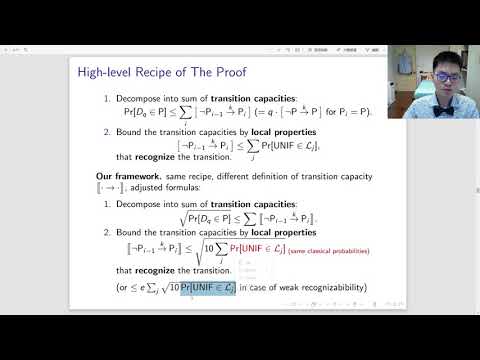CryptoDB
On the Compressed-Oracle Technique, and Post-Quantum Security of Proofs of Sequential Work
| Authors: |
|
|---|---|
| Download: |
|
| Conference: | EUROCRYPT 2021 |
| Abstract: | We revisit the so-called compressed oracle technique, introduced by Zhandry for analyzing quantum algorithms in the quantum random oracle model (QROM). To start off with, we offer a concise exposition of the technique, which easily extends to the parallel-query QROM, where in each query-round the considered algorithm may make several queries to the QROM in parallel. This variant of the QROM allows for a more fine-grained query-complexity analysis. Our main technical contribution is a framework that simplifies the use of (the parallel-query generalization of) the compressed oracle technique for proving query complexity results. With our framework in place, whenever applicable, it is possible to prove quantum query complexity lower bounds by means of purely classical reasoning. More than that, for typical examples the crucial classical observations that give rise to the classical bounds are sufficient to conclude the corresponding quantum bounds. We demonstrate this on a few examples, recovering known results but also obtaining new results. Our main target is the hardness of finding a q-chain with fewer than q parallel queries, i.e., a sequence x_0, x_1, ..., x_q with x_i = H(x_{i-1}) for all 1 \leq i \leq q. The above problem of finding a hash chain is of fundamental importance in the context of proofs of sequential work. Indeed, as a concrete cryptographic application of our techniques, we prove quantum security of the ``Simple Proofs of Sequential Work'' by Cohen and Pietrzak. |
Video from EUROCRYPT 2021
BibTeX
@inproceedings{eurocrypt-2021-30919,
title={On the Compressed-Oracle Technique, and Post-Quantum Security of Proofs of Sequential Work},
publisher={Springer-Verlag},
doi={10.1007/978-3-030-77886-6_21},
author={Kai-Min Chung and Serge Fehr and Yu-Hsuan Huang and Tai-Ning Liao},
year=2021
}

